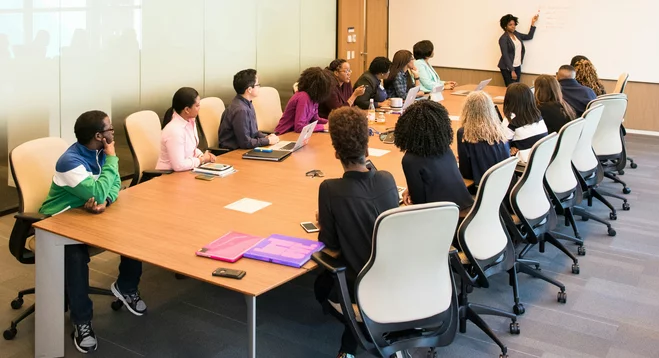
How To Get Meetings Going
Meetings consume an absurd amount of time.
Meeting Types
For time management, there are only two types of meetings.
Meetings you have to attend, and meetings you do not have to attend.
Let’s decide which is which.
Useless Meetings
Many people will view an invitation as a request that they attend a meeting.
When you are invited to a meeting, stop and think about whether you actually need to attend.
Feeling the need to respond immediately is a great demonstration of the urgency effect!
Will you learn something important or contribute something important?
If not, say no!
If the meeting is a few weeks in the future, then the temptation is to just say ‘Yes’.
Saying ‘Yes’ now has no cost in the present, and makes life easier immediately as the invite is then cleared from your inbox.
The issue is then that in a couple of weeks time the meeting comes up, and you realise that it’s not going to be a good use of your time.
When someone invites you to a meeting ask yourself:
Would you attend if the meeting was today?

Mandatory Meetings
For the meetings you do need to attend!
Push people to run it efficiently and effectively to maximise your output from the meeting.
Even if they don’t say, don’t doubt that other attendees will be thanking you.
Remember even if you aren’t running the meetings, you are not powerless.
If you are attending a meeting, don’t miss the opportunity that you have to shape it and drive it forward.
Check out these tips to start getting those meetings running well!
1. Purpose / Agenda
A meeting without an agenda or clearly stated purpose is a sure-fire recipe for wasted time.
If you don’t know what you’re aiming for, then you’ll have no idea when you get there.
Meetings without agendas meander to a close, as people aren’t sure if everything has been completed.
Meetings with agendas end crisply as it is clear to everyone that the meeting is finished as the business to be addressed has been concluded.
Making sure as much of your time spent at work has a purpose is key to learning to manage your time!
If you don’t have an agenda for a meeting you are supposed to be attending:
Email the organiser before the meeting asking them if there is an agenda.
2. Set An End Time
If people don’t have a clear deadline to hit, they tend to wander and waste time.
If the person who set the meeting didn’t set an end time:
Let them know that you have to leave at a certain time.
This will force the organiser to get to the point of the meeting!
Not knowing how long a meeting should take is an obvious planning mistake by the leader!
3. Stop Small Talk
Small talk is an important part of group activities, but can be excessive.
As a participant, you can help to manage down the amount of small talk.
Try saying something like: “Do you think we should be getting started?”.
This is a polite way of signalling that you’d like to get started.
Meetings are often a reflection of the participants, so keep things under control!
Conclusion
The best way to reduce the time you spend in meetings?
Go to less meetings!
But when you have to go, make sure you keep these tips in mind.
And don’t forget, meetings can still be great place for you to learn things!
